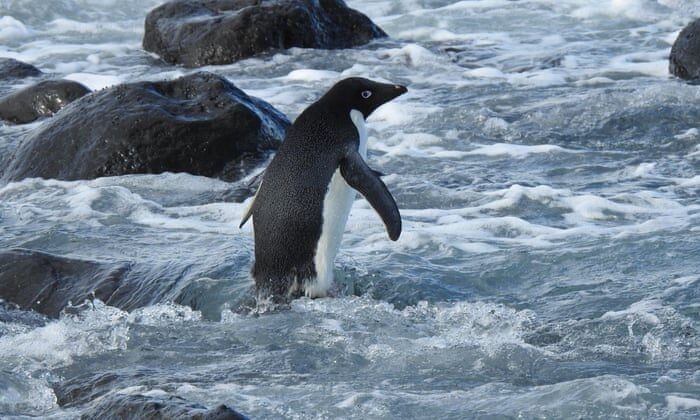
The Adélie penguin, which is native to Antarctica, washed up on the coast of New Zealand on Wednesday.
The rare visitor was spotted by resident Harry Singh, just south of Christchurch in Birdlings Flat on the South Island. A video captured by Singh shows the penguin wandering around on the beach.
"I did not notice any physical injury, but it was tired and hungry," Singh told NBC News via Facebook Messenger on Friday.
The last sighting of an Adélie penguin was in 1993 and this is only the third time one of the birds has made it to New Zealand's shores, according to an online encyclopedia of New Zealand birds, which says that one was found dead in 1962 and a live Adélie penguin was reportedly found in 1993.
Although the bird's sex was not immediately determined, locals fondly named it "Pingu," after the main character in a clay animated children's TV series.
Singh said he and his wife stayed with the exhausted creature for nearly four hours, until staff from Christchurch Penguin Rehabilitation came to its rescue.
Thomas Stracke of Christchurch Penguin Rehabilitation arrived at the scene with a veterinarian, according to the news website Stuff. He told the site that the penguin was malnourished and severely dehydrated. The team had given Pingu some "fish smoothies" before it was released back to the sea Friday morning, he added.
"We picked a south-facing bay with not too many visitors and no dogs," Anita Spencer, senior ranger at the Department of Conservation, told the Australian Associated Press. Rejuvenated and on its feet again, Pingu jumped across boulders and dove into the waves.
Adélie penguins are commonly found on the coasts of Antarctica. Being excellent swimmers, the species can travel up to 745 miles away from home. The tuxedo-clad birds are known to breed on rocky, ice-free ground.
"We know that juvenile penguins explore quite widely before they settle to breed," said Philip Trathan, a senior research scientist with the British Antarctic Survey, who is part of a diverse group of marine scientists who research a wide variety of seabirds in the Southern Ocean.
"This bird may have got lost or confused. In the future, as our oceans change, it will be important to understand whether normal behavior also changes," he added.
Adélie and Emperor penguins are the only two species of penguin that live on sea ice; all other penguins dwell in open water. Adélie penguins are an indicator species used to detect and monitor the effects of environmental change on Antarctic marine ecosystems, according to a New Zealand government website.
Almost the entire cohort of chicks from an Adélie penguin colony in the eastern Antarctic was wiped out by starvation in 2017.
Researchers said the mass die-off occurred because unusually large amounts of sea ice forced penguin parents to travel farther in search of food for their young.
By the time they returned, only two out of thousands of chicks had survived.



Comment: While in the northern hemisphere three snowy owls turned up in Asturias, Spain far south of normal winter range.